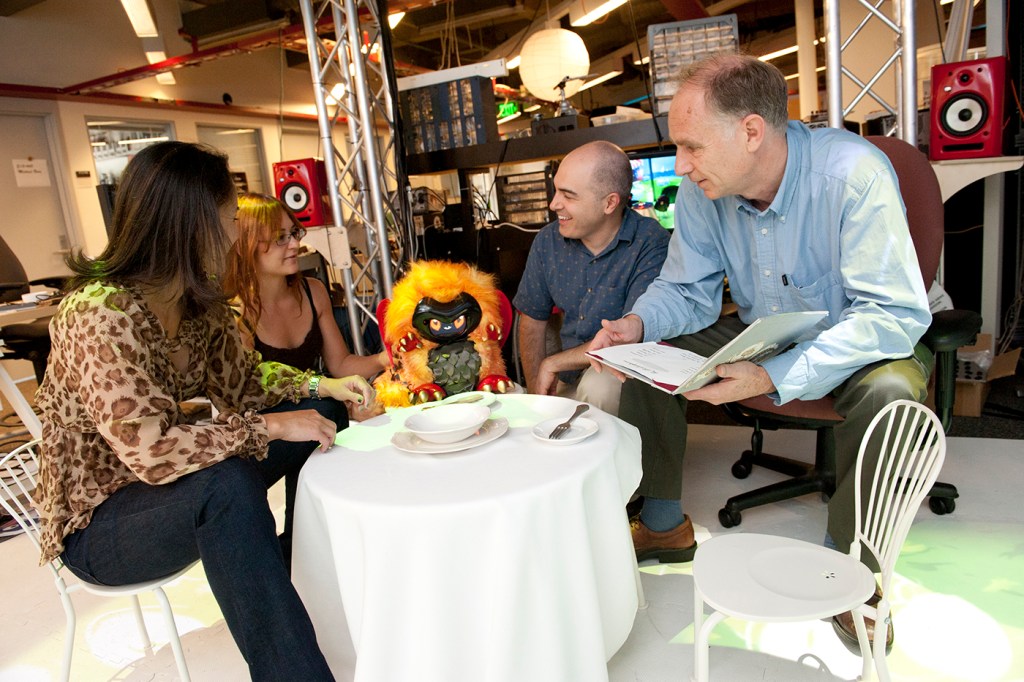Robotic dragon, an unlikely teacher

David DeSteno, an associate professor of psychology at Northeastern, and researchers from the Massachusetts Institute of Technology (MIT) and Harvard University, are examining how social robots can aid preschoolers in language learning, which DeSteno said, isn’t possible with current computer-based learning.
“You can watch a video, or play a computer game, but there’s no dynamic social component in those technologies, which research is showing to be really important for learning in children,” said DeSteno, who runs the Social Emotions Group lab at Northeastern.
DeSteno is working on the project — funded by a four-year $923,000 National Science Foundation (NSF) grant for Cyberlearning Initiatives — in collaboration with Cynthia Breazeal at MIT’s Personal Robots Group lab and Paul Harris, the Victor S. Thomas Professor of Education at Harvard University.
This award comes on the heels of a prior NSF-funded collaboration between DeSteno and Breazeal, who used the wide-eyed robot Nexi to reveal how people use social cues to determine strangers’ trustworthiness.
To appeal to young children, the robot prototype in this new project resembles a cute, stuffed animal-like dragon. Its movement appears very life-like and can be remotely controlled through an Internet interface.
“Certain non-verbal cues like mimicking behavior to improve rapport and social bonding, or changes in gaze direction to guide shared attention, are central,” DeSteno said. “When kids learn from human teachers, these cues enhance the learning. We’re designing our new dragon robots to be able to have these capabilities.”
Researchers will situate the child and the robot at a table in a preschool setting to interact with each other and observe the exchange of social and emotional cues that show approval and engagement, such as nodding and eye gaze, while an operator controls the robot from a computer.
DeSteno said it is fundamental that the children have some kind of connection with the robot in order for it to effectively operate as a “teacher.”
“Children tend to learn and accept information more readily from individuals that they feel bonded to, so we need to make them feel like the robot is a sentient being,” he said.
To achieve that, DeSteno and Breazeal will draw from their previous work with Nexi, in which they viewed human-to-human pairs interact and recorded and analyzed all of their behaviors, identifying the cues that were most important in expressing how human biological motions and social bonding work.
After testing the “dragon” robots within a preschool context at MIT, researchers plan to monitor their effectiveness as a distance-learning tool in children’s homes, which could be especially helpful for children who live in rural areas.
“We hope this technology will help to increase the efficiency by which an instructor can teach kids and reach kids in the classroom and remotely,” he said.





